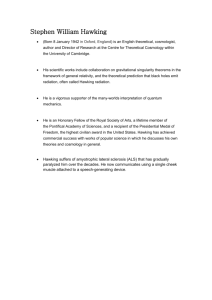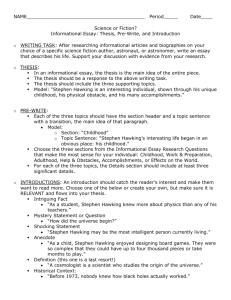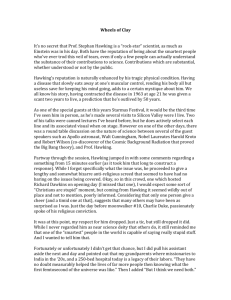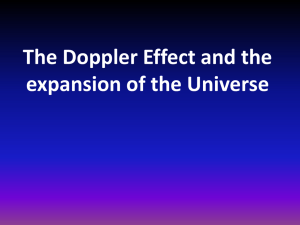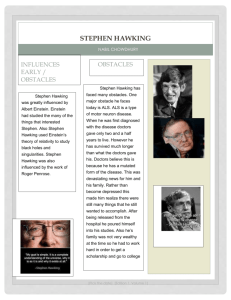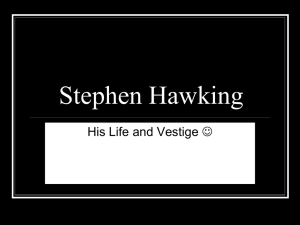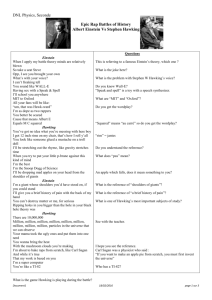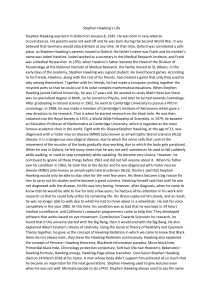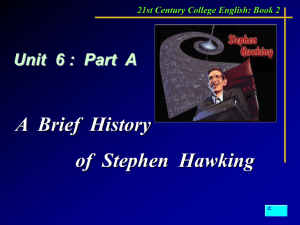English
advertisement
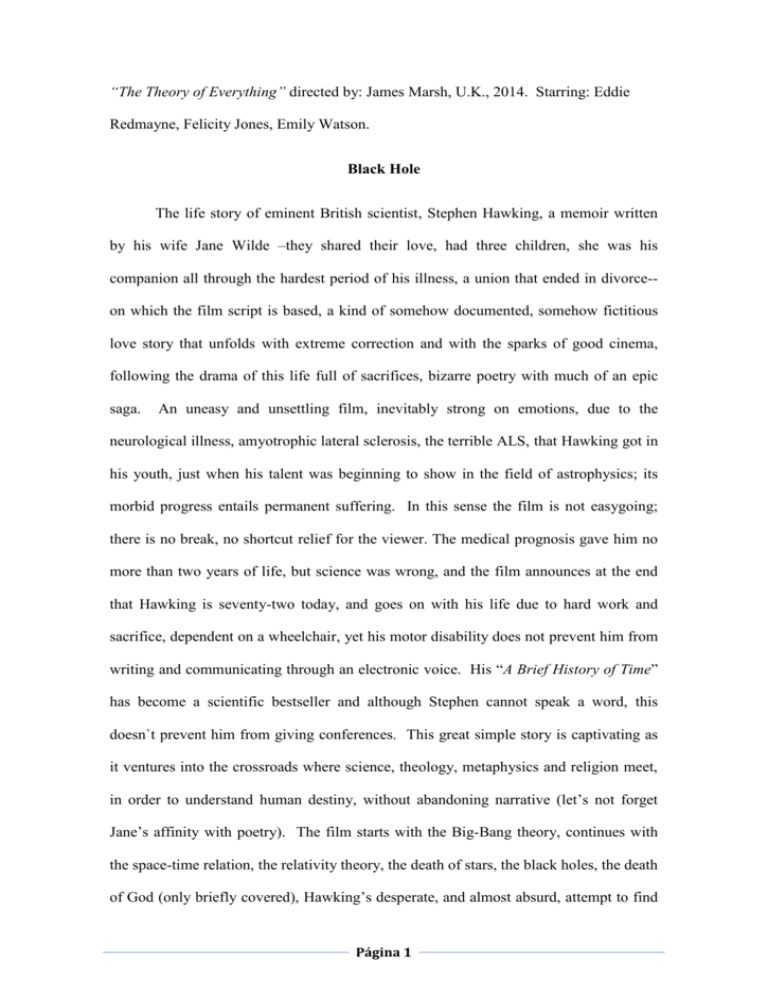
“The Theory of Everything” directed by: James Marsh, U.K., 2014. Starring: Eddie Redmayne, Felicity Jones, Emily Watson. Black Hole The life story of eminent British scientist, Stephen Hawking, a memoir written by his wife Jane Wilde –they shared their love, had three children, she was his companion all through the hardest period of his illness, a union that ended in divorce-on which the film script is based, a kind of somehow documented, somehow fictitious love story that unfolds with extreme correction and with the sparks of good cinema, following the drama of this life full of sacrifices, bizarre poetry with much of an epic saga. An uneasy and unsettling film, inevitably strong on emotions, due to the neurological illness, amyotrophic lateral sclerosis, the terrible ALS, that Hawking got in his youth, just when his talent was beginning to show in the field of astrophysics; its morbid progress entails permanent suffering. In this sense the film is not easygoing; there is no break, no shortcut relief for the viewer. The medical prognosis gave him no more than two years of life, but science was wrong, and the film announces at the end that Hawking is seventy-two today, and goes on with his life due to hard work and sacrifice, dependent on a wheelchair, yet his motor disability does not prevent him from writing and communicating through an electronic voice. His “A Brief History of Time” has become a scientific bestseller and although Stephen cannot speak a word, this doesn`t prevent him from giving conferences. This great simple story is captivating as it ventures into the crossroads where science, theology, metaphysics and religion meet, in order to understand human destiny, without abandoning narrative (let’s not forget Jane’s affinity with poetry). The film starts with the Big-Bang theory, continues with the space-time relation, the relativity theory, the death of stars, the black holes, the death of God (only briefly covered), Hawking’s desperate, and almost absurd, attempt to find Página 1 the beginning of time. Penrose, his professor, led him to learn the process which begins with the deadly wounded stars to the subsequent loss of mass, light, and radiation, until they are reduced to sinister black holes. The earthly existence of Hawking does not differ much from that of an apocalyptical (but also frightening and beautiful) description of a star in the process of its extinction, a metaphor illustrating the turnout of Hawking’s own life: A fascinating human star, though in exhausting agony, a body wreck, still in possession of an eternal spiritual glow. There are several captivating moments in the film like that when Stephen and Jane finish their courtship at a party, one night, on a bridge, with a clarinet solo playing on the background; or during a conference when Stephen imagines and thinks he can get up and pick up a pen that someone in the audience drops. Eddie Redmayne, who had a great debut in “My Week with Marilyn”, does an outstanding job, very earnest and well achieved, wearing a mask of rebellious and agonizing expressions, no longer responding to his strong will, together with a physical attitude in accordance with the invasive spirit of the illness. The actor plays well the predicament of the character when trying to hold his neck, or when he walks dragging his feet, or that extreme moment when the trembling of his hands at the family table becomes so unbearable that he is compelled to run away from the gathering. A brilliant brain sustained by a body that resembles an old piece of furniture. Felicity Jones is a very good player in the role of Jane, the young student of Medieval Literature, who takes on her shoulders the burden of this great man for as long as she can, until she has to admit, at a stop on her journey, that she can no longer carry on. There are other moments that also spur emotions: the seizure Hawking suffered, revealing the beginning and nature of his illness. ALS is shown at its most pathetical, by shifting the camera lenses --and in the same swing the viewer’s eyes-- to be ‘hooked’ to Stephen’s own eyes, or to the ripples on the surface of a cup of coffee, or the shot Página 2 from a spiral staircase. This collective mesmerizing effect is what helps the viewer’s imagination grasp what is happening, moving from the galactic universe to the micro galaxy of the sick man. Stephen Hawkin’s galactic mini-universe also spins, glows, shines, blackens and will one day fade out. God knows when. Juan Carlos Capo Página 3
